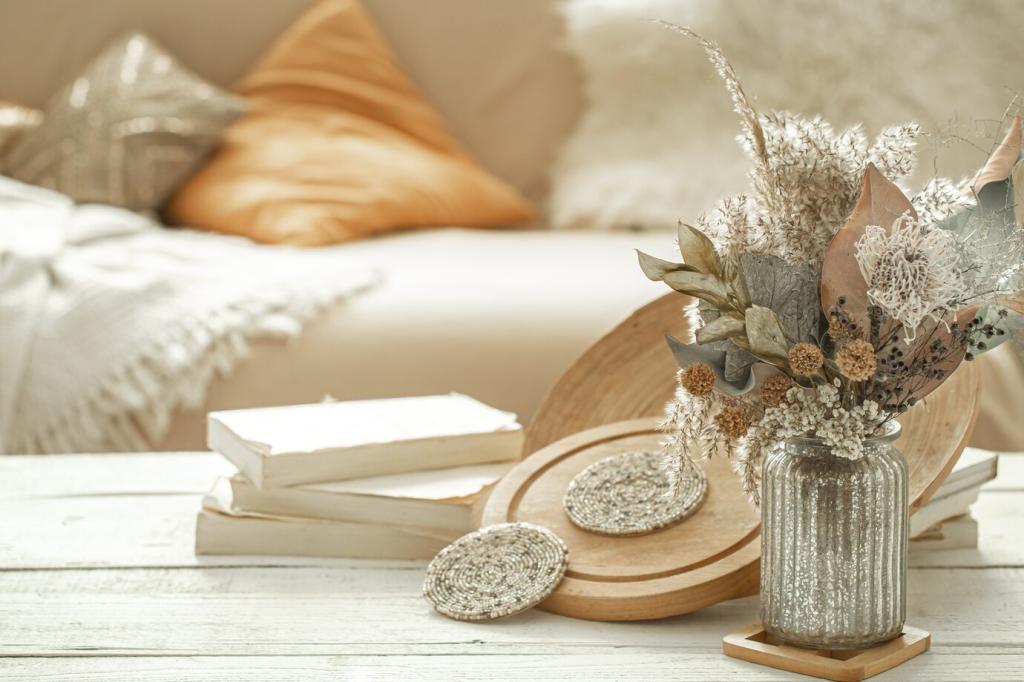Embarking on a green home décor journey is a rewarding endeavor that benefits not only the environment but also your personal well-being. By making thoughtful choices about the materials, products, and practices you incorporate into your living spaces, you can significantly reduce your ecological footprint. Green home décor is about blending aesthetics with sustainability, showing that eco-friendly living can be both beautiful and practical. This guide will help you understand the core principles, discover essential sustainable materials, explore mindful decorating practices, and embrace long-term habits for maintaining an earth-conscious home.

Embracing Sustainability
Sustainability in home décor emphasizes choosing products and materials that are renewable, responsibly sourced, and have minimal negative environmental impact. It’s about shifting from a throwaway mindset to valuing longevity, quality, and purpose. When you prioritize sustainability, you contribute to cleaner air and water, reduce waste, and support the preservation of natural resources. By integrating these elements into your décor, your home becomes more than just a personal space—it becomes a testament to stewardship and mindful living.
Prioritizing Health and Wellness
A green home isn’t just about sustainability; it also fosters a healthier living environment for you and your family. Many conventional décor products contain harmful chemicals that can impact indoor air quality and well-being. Green choices prioritize non-toxic, natural materials and finishes, which reduce exposure to volatile organic compounds (VOCs) and allergens. This leads to improved air quality, fewer respiratory issues, and an overall sense of comfort within your space. Integrating health-conscious design not only benefits you but also supports broader community and planetary well-being.
Encouraging Ethical Choices
Ethical considerations are central to green décor, encompassing fair labor practices, transparent supply chains, and support for local and global artisan communities. By seeking out products certified for ethical production or handcrafted by skilled artisans, you’re investing in a fairer, more compassionate world. Ethical choices often go hand in hand with quality, as the focus is on craftsmanship and durability rather than mass production. This ethical stance elevates your home’s aesthetic while championing the rights and dignity of all who contribute to the items you bring into your living space.
Natural Fibers and Textiles
Opting for natural fibers—such as organic cotton, linen, hemp, bamboo, and wool—has a profound effect on your décor’s sustainability. These textiles are grown and processed with fewer chemicals, making them healthier for home environments and less taxing on the planet. Natural fibers are typically biodegradable and require less energy to produce compared to synthetics. Their rich textures and colors bring warmth and tactile interest to spaces while supporting environmentally considerate agricultural and production methods. Making this choice elevates comfort and conscience in your everyday living.
Reclaimed and Recycled Elements
Incorporating reclaimed wood, recycled glass, and upcycled metals not only adds character and history to your home but also diverts materials from landfills. These elements tell unique stories through their aged patinas, distinctive markings, and artisan transformations. Choosing such materials reduces the demand for new raw resources, curtailing deforestation and energy-intensive mining processes. Reclaimed and recycled décor demonstrates creativity and conscientiousness, as each piece bridges the past and present with environmental integrity.
Non-Toxic and Low-Impact Finishes
The finishes applied to your décor items matter as much as the materials themselves. Opt for paints, sealants, and stains labeled as low-VOC or VOC-free, which minimize harmful emissions that degrade indoor air quality. These products are crafted to have a gentler impact on both human health and ecological systems, reducing exposure to persistent pollutants. Making a habit of selecting non-toxic, environmentally certified finishes empowers you to truly harmonize style with sustainability throughout your home.

Previous slide
Next slide
